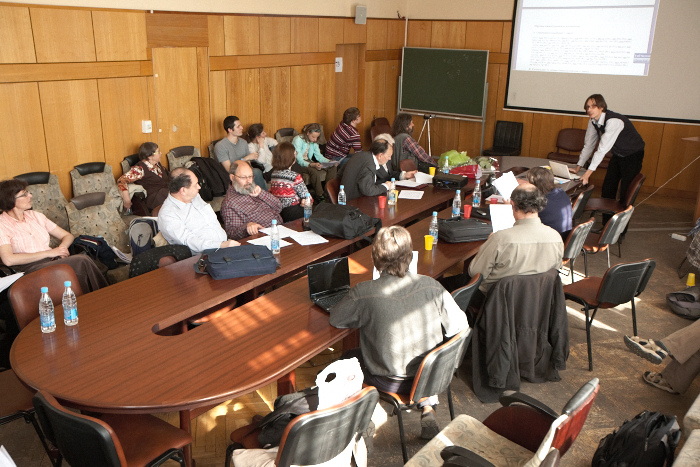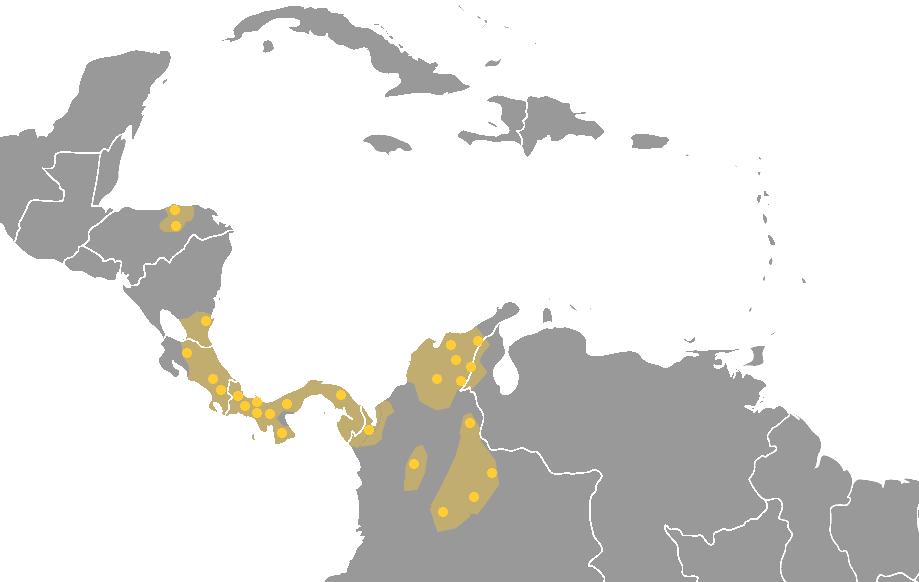|
Splitters And Lumpers
Lumpers and splitters are opposing factions in any discipline that has to place individual examples into rigorously defined categories. The lumper–splitter problem occurs when there is the desire to create classifications and assign examples to them, for example schools of literature, biological taxa and so on. A "lumper" is a person who assigns examples broadly, assuming that differences are not as important as signature similarities. A "splitter" is one who makes precise definitions, and creates new categories to classify samples that differ in key ways. Origin of the terms The earliest known use of these terms was by Charles Darwin, in a letter to Joseph Dalton Hooker in 1857: ''It is good to have hair-splitters & lumpers''. They were introduced more widely by George G. Simpson in his 1945 work ''The Principles of Classification and a Classification of Mammals''. As he put it: A later use can be found in the title of a 1969 paper "On lumpers and splitters ..." by the ... [...More Info...] [...Related Items...] OR: [Wikipedia] [Google] [Baidu] |
Discipline (academia)
Discipline refers to rule following behavior, to regulate, order, control and authority. It may also refer to punishment. Discipline is used to create habits, routines, and automatic mechanisms such as blind obedience. It may be inflicted on others or on oneself. Self discipline refers to the practice of self restraint, controlling one's emotions, and ignoring impulses. History Disciplinarians have been involved in many societies throughout history. The Victorian era resulted in the popular use of disciplinarian governance over children. Edward VIII had a disciplinarian father, and the English had modeled the royal families during this era. Edward's grandmother was Queen Victoria who had championed the role of the family unit during her reign. Disciplinarians will enforce a stricter set of rules that are aimed at developing children according to theories of order and discipline. Disciplinarians have also been linked to child abuse in numerous cases and biographies. Self-disci ... [...More Info...] [...Related Items...] OR: [Wikipedia] [Google] [Baidu] |
Romanticism
Romanticism (also known as the Romantic movement or Romantic era) was an artistic, literary, musical, and intellectual movement that originated in Europe towards the end of the 18th century, and in most areas was at its peak in the approximate period from 1800 to 1850. Romanticism was characterized by its emphasis on emotion and individualism, clandestine literature, paganism, idealization of nature, suspicion of science and industrialization, and glorification of the past with a strong preference for the medieval rather than the classical. It was partly a reaction to the Industrial Revolution, the social and political norms of the Age of Enlightenment, and the scientific rationalization of nature. It was embodied most strongly in the visual arts, music, and literature, but had a major impact on historiography, education, chess, social sciences, and the natural sciences. It had a significant and complex effect on politics, with romantic thinkers influencing conservatism, libe ... [...More Info...] [...Related Items...] OR: [Wikipedia] [Google] [Baidu] |
Classification Of Indigenous Languages Of The Americas
This is a list of different language classification proposals developed for the indigenous languages of the Americas. The article is divided into North, Central, and South America sections; however, the classifications do not correspond to these divisions. North America ''Glottolog'' 4.1 (2019) ''Glottolog'' 4.1 (2019) recognizes 42 independent families and 31 isolates in North America (73 total). The vast majority are (or were) spoken in the United States, with 26 families and 26 isolates (52 total). ;North American languages families proposed in ''Glottolog'' 4.1 ;Families (42) #Otomanguean (180) #Arawakan (78) # Uto-Aztecan (69) #Algic (46) # Athabaskan-Eyak-Tlingit (45) #Mayan (33) #Chibchan (27) #Salishan (25) # Mixe-Zoque (19) #Siouan (18) #Eskimo–Aleut (12) # Totonacan (12) # Cochimi-Yuman (11) #Iroquoian (11) # Miwok-Costanoan (11) #Kiowa-Tanoan (8) #Muskogean (7) # Pomoan (7) # Chumashan (6) #Wakashan (6) #Caddoan (5) #Misumalpan (5) #Sahaptian (5) # Xincan (5) #C ... [...More Info...] [...Related Items...] OR: [Wikipedia] [Google] [Baidu] |
Nilo-Saharan
The Nilo-Saharan languages are a proposed family of African languages spoken by some 50–60 million people, mainly in the upper parts of the Chari and Nile rivers, including historic Nubia, north of where the two tributaries of the Nile meet. The languages extend through 17 nations in the northern half of Africa: from Algeria to Benin in the west; from Libya to the Democratic Republic of the Congo in the centre; and from Egypt to Tanzania in the east. As indicated by its hyphenated name, Nilo-Saharan is a family of the African interior, including the greater Nile Basin and the Central Sahara Desert. Eight of its proposed constituent divisions (excluding Kunama, Kuliak, and Songhay) are found in the modern countries of Sudan and South Sudan, through which the Nile River flows. In his book ''The Languages of Africa'' (1963), Joseph Greenberg named the group and argued it was a genetic family. It contains the languages which are not included in the Niger–Congo, Afroasiatic o ... [...More Info...] [...Related Items...] OR: [Wikipedia] [Google] [Baidu] |
Pama–Nyungan Languages
The Pama–Nyungan languages are the most widespread family of Australian Aboriginal languages, containing 306 out of 400 Aboriginal languages in Australia. The name "Pama–Nyungan" is a merism: it derived from the two end-points of the range: the Pama languages of northeast Australia (where the word for "man" is ) and the Nyungan languages of southwest Australia (where the word for "man" is ). The other language families indigenous to the continent of Australia are occasionally referred to, by exclusion, as non-Pama–Nyungan languages, though this is not a taxonomic term. The Pama–Nyungan family accounts for most of the geographic spread, most of the Aboriginal population, and the greatest number of languages. Most of the Pama–Nyungan languages are spoken by small ethnic groups of hundreds of speakers or fewer. The vast majority of languages, either due to disease or elimination of their speakers, have become extinct, and almost all remaining ones are endangered in some ... [...More Info...] [...Related Items...] OR: [Wikipedia] [Google] [Baidu] |
Altaic Languages
Altaic (; also called Transeurasian) is a controversial proposed language family that would include the Turkic languages, Turkic, Mongolic languages, Mongolic and Tungusic languages, Tungusic language families and possibly also the Japonic languages, Japonic and Koreanic languages. Speakers of these languages are currently scattered over most of Asia north of 35th parallel north, 35° N and in some eastern parts of Europe, extending in longitude from Turkey to Japan. The group is named after the Altai Mountains, Altai mountain range in the center of Asia. The hypothetical language family has long been rejected by most Comparative linguistics, comparative linguists, although it continues to be supported by a small but stable scholarly minority. The research on their supposedly common linguistics origin has inspired various comparative studies on the folklore and mythology among the Turkic people, Turks, Proto-Mongols and Tungus people, Tungus people. The Altaic family was first ... [...More Info...] [...Related Items...] OR: [Wikipedia] [Google] [Baidu] |
Language Family
A language family is a group of languages related through descent from a common ''ancestral language'' or ''parental language'', called the proto-language of that family. The term "family" reflects the tree model of language origination in historical linguistics, which makes use of a metaphor comparing languages to people in a biological family tree, or in a subsequent modification, to species in a phylogenetic tree of evolutionary taxonomy. Linguists therefore describe the ''daughter languages'' within a language family as being ''genetically related''. According to '' Ethnologue'' there are 7,151 living human languages distributed in 142 different language families. A living language is defined as one that is the first language of at least one person. The language families with the most speakers are: the Indo-European family, with many widely spoken languages native to Europe (such as English and Spanish) and South Asia (such as Hindi and Bengali); and the Sino-Tibetan famil ... [...More Info...] [...Related Items...] OR: [Wikipedia] [Google] [Baidu] |
Historical Linguistics
Historical linguistics, also termed diachronic linguistics, is the scientific study of language change over time. Principal concerns of historical linguistics include: # to describe and account for observed changes in particular languages # to reconstruct the pre-history of languages and to determine their relatedness, grouping them into language families ( comparative linguistics) # to develop general theories about how and why language changes # to describe the history of speech communities # to study the history of words, i.e. etymology Historical linguistics is founded on the Uniformitarian Principle, which is defined by linguist Donald Ringe as: History and development Western modern historical linguistics dates from the late-18th century. It grew out of the earlier discipline of philology, the study of ancient texts and documents dating back to antiquity. At first, historical linguistics served as the cornerstone of comparative linguistics, primarily as a t ... [...More Info...] [...Related Items...] OR: [Wikipedia] [Google] [Baidu] |
Moscow Comparative Linguistics School
Moscow ( , US chiefly ; rus, links=no, Москва, r=Moskva, p=mɐskˈva, a=Москва.ogg) is the capital and largest city of Russia. The city stands on the Moskva River in Central Russia, with a population estimated at 13.0 million residents within the city limits, over 17 million residents in the urban area, and over 21.5 million residents in the metropolitan area. The city covers an area of , while the urban area covers , and the metropolitan area covers over . Moscow is among the world's largest cities; being the most populous city entirely in Europe, the largest urban and metropolitan area in Europe, and the largest city by land area on the European continent. First documented in 1147, Moscow grew to become a prosperous and powerful city that served as the capital of the Grand Duchy that bears its name. When the Grand Duchy of Moscow evolved into the Tsardom of Russia, Moscow remained the political and economic center for most of the Tsardom's history. When the Ts ... [...More Info...] [...Related Items...] OR: [Wikipedia] [Google] [Baidu] |
Model-driven Architecture
Model Driven Architecture (MDA) is a software design approach for the development of software systems. It provides a set of guidelines for the structuring of specifications, which are expressed as models. Model Driven Architecture is a kind of domain engineering, and supports model-driven engineering of software systems. It was launched by the Object Management Group (OMG) in 2001."OMG pursues new strategic direction to build on success of past efforts" Overview Model Driven Architecture® (MDA®) "provides an approach for deriving value from models and architecture in support of the full life cycle of physical, organizational and I.T. systems". A model is a (representation of) an abstraction of a system. MDA® provides value by producing models ...[...More Info...] [...Related Items...] OR: [Wikipedia] [Google] [Baidu] |
Software Engineering
Software engineering is a systematic engineering approach to software development. A software engineer is a person who applies the principles of software engineering to design, develop, maintain, test, and evaluate computer software. The term '' programmer'' is sometimes used as a synonym, but may also lack connotations of engineering education or skills. Engineering techniques are used to inform the software development process which involves the definition, implementation, assessment, measurement, management, change, and improvement of the software life cycle process itself. It heavily uses software configuration management which is about systematically controlling changes to the configuration, and maintaining the integrity and traceability of the configuration and code throughout the system life cycle. Modern processes use software versioning. History Beginning in the 1960s, software engineering was seen as its own type of engineering. Additionally, the development of soft ... [...More Info...] [...Related Items...] OR: [Wikipedia] [Google] [Baidu] |
Sergei Rachmaninoff
Sergei Vasilyevich Rachmaninoff; in Russian pre-revolutionary script. (28 March 1943) was a Russian composer, virtuoso pianist, and conductor. Rachmaninoff is widely considered one of the finest pianists of his day and, as a composer, one of the last great representatives of Romanticism in Russian classical music. Early influences of Tchaikovsky, Rimsky-Korsakov, and other Russian composers gave way to a thoroughly personal idiom notable for its song-like melodicism, expressiveness and rich orchestral colours. The piano is featured prominently in Rachmaninoff's compositional output and he made a point of using his skills as a performer to fully explore the expressive and technical possibilities of the instrument. Born into a musical family, Rachmaninoff took up the piano at the age of four. He studied with Anton Arensky and Sergei Taneyev at the Moscow Conservatory and graduated in 1892, having already composed several piano and orchestral pieces. In 1897, following the d ... [...More Info...] [...Related Items...] OR: [Wikipedia] [Google] [Baidu] |







